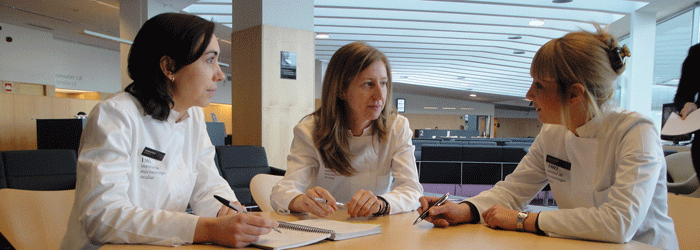IMO is organising an Advanced Contact Lens and Ocular Surface Course, aimed at opticians and optometrists, to be held at IMO on 2 and 3 June. The course will focus on contact lens fitting as a solution for improving the visual acuity of patients with irregular corneas or ocular surface problems.
According to Ana Nolla, Laura González and Lourdes Jiménez, who are optometrists at IMO and the organisers of the course (pictured), "this field is advancing very quickly and requires eye care professionals to constantly update their knowledge." In addition to dealing with the fitting of contact lenses in special cases (corneas with corneal disease or after surgery), the course will be addressing other matters, such as solutions for presbyopia and dry eye and their treatment.
During the course, doctors from the Cornea Department of IMO, José Luis Güell, Óscar Gris and Daniel Elies, will be explaining the eye conditions to which different treatments can be applied: contact lenses, surgery or drug treatment. The organisers of the course stress the importance of collaboration between opticians and ophthalmologists to provide the best patient care. "At IMO, we deal with many patients with complex cases, who are offered both optical and ophthalmic solutions. Optometrists and ophthalmologists work together to provide the patient with the best solution."
Patients who are likely to require these treatments are those who suffer from corneal damage or injury (by accident or trauma), keratoconus or other ectasias (corneal deformation) or those who have undergone some kind of corneal surgery. The course will run for one and a half days and will include a theoretical component and practical workshops. In these workshops, participants will learn how to get the most out of the tests available (tomography, topography and aberrometry) to ensure optimum contact lens fitting. They will also be able to perform contact lens fitting simulations with irregular corneas and fit multifocal soft contact lenses to real patients.
